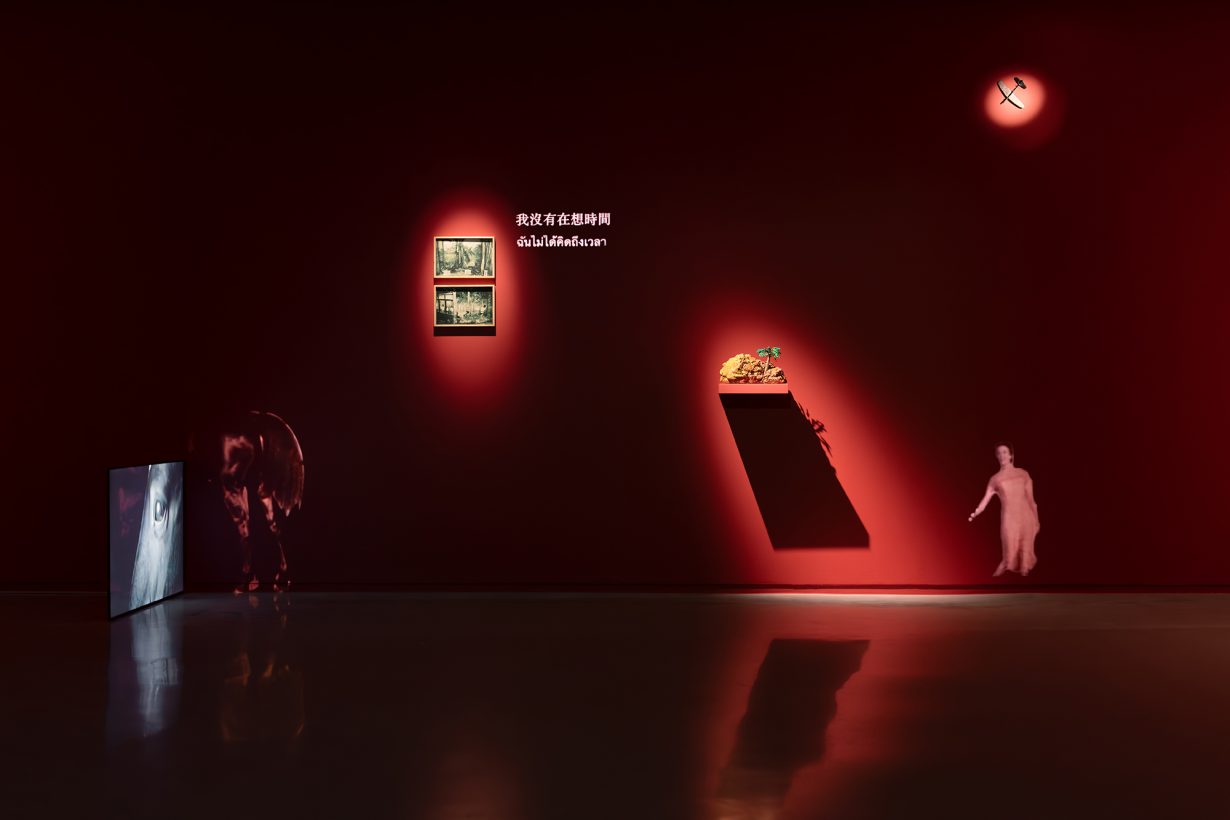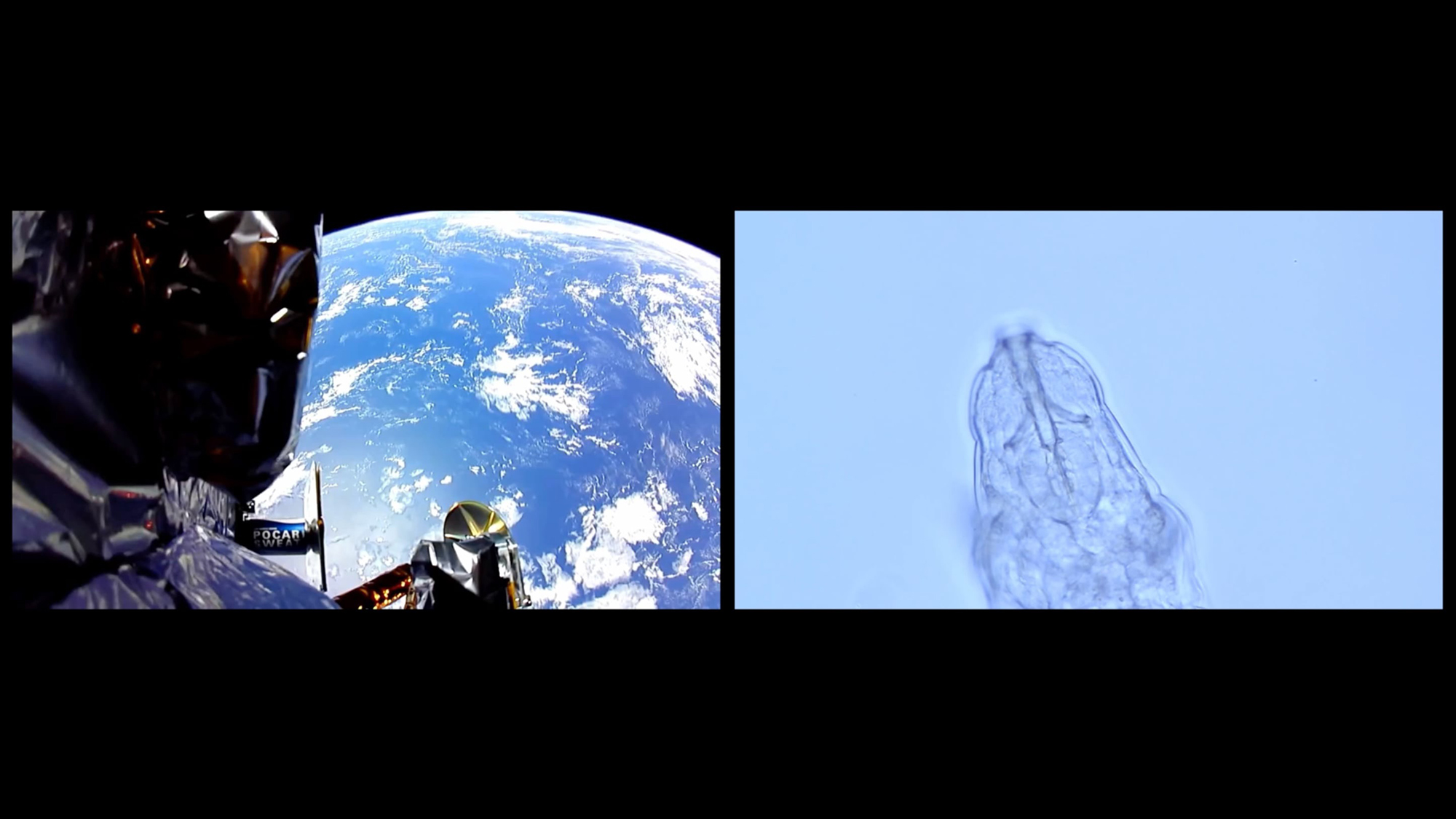Exploring the late philosopher Bruno Latour’s concept of ‘landing’, a group show in Bangkok explores cross-border journeys, from on land to the lunar
To the list of commentators on humankind’s speculative plans to colonise space we can now add tardigrades: eight-legged, near-microscopic animals that thrive across the biosphere, from deep sea to mountaintop. In Anurak Tanyapalit’s two-channel video A Trip to the Moon (Tardigrade) (2025), a group of the hardy creatures squirm under a microscope whilst conversing in whiny voices about how scientists are considering mining the moon for non-radioactive isotopes and using “it as a temporary outpost – before the conquest of Mars”. A capsule of hapless tardigrades was stowed aboard the Beresheet, the Israeli lunar probe that crash-landed on the moon’s surface in 2019. Which goes some way to explaining their scepticism about humanity’s cosmic flights of fancy: “To extract just one gram of helium-3, they would have to dig 150 feet deep. Are they truly willing to trade Earth for this?” one asks.
Tanyapalit’s shrill, spacefaring tardigrades are a natural fit for a group show that gains its thrust, as the exhibition wall text explains, from the late philosopher Bruno Latour’s concept of ‘landing’. Humanity, he argued in Critical Zones: The Science and Politics of Landing on Earth (2020), is ‘suspended’ in mid-air, caught between two worlds: the one we think we live in, and the one we habitually live from. But, with Earth reacting violently to our damaging actions, a landing – a process of discovering what being truly earthly means – is required. Elegantly curated by Phiraya Ardwichai, this exhibition borrows Latour’s metaphor of a restorative landing, but skews it by zoning in on real-life ‘landings’ of a more deleterious sort; its five artworks explore cross border (as well as lunar) journeys forced upon nature and living beings by green imperialism, colonial adventure and animal diplomacy of the modern era.
In 1960, the mayor of Chicago gifted 18 bluegill fish to Japan’s crown prince Akihito. The devastation of the native fish population resulting from this ‘landing’ is the subject of Shiori Watanabe’s two-channel video Blue-Act on the Prevention of Adverse Ecological Impact Caused by Designated Invasive Alien (2024), which flits between long, placid shots above and below water at scenic lakes, and AI footage of Akihito peering into tropical fish tanks while on a trip to New York. Another ‘landing’ – the introduction during the early colonial era of cash crops such as rubber, quinine and tea to Ciater in Western Java – is broached in Radni Thiemann Beelt’s constellations of photographs, Synthetic Forest Series (2025), which capture from viewpoints both intimate and epic the area’s now overfarmed and abraded landscape.

Complemented by a classroom-style wall map where short, digressive research texts appear on multicoloured paper, these works quietly instruct (and incriminate) – the ‘landings’ we humans have engineered thus far have tended to be hard rather than soft (literally in the case of the stranded tardigrades), and have widened the disconnect between Latour’s two worlds rather than shrunk it. But the show is at its best when the sensation of being schooled gives way to atmosphere, a worldmaking that feels more akin to a slippery mode of immersive storytelling than a linear narrative of displacement or suspension.
The standout in this regard is Au Sow Yee’s elegiac Splendored Thing of the Coconut, a Belle from Penang and the Secret Agent (2018), a multimedia excavation of the Imperial Japanese government’s strategic importing of tropical plants and horses to southern Taiwan. Near a crude coconut-tree diorama, vintage film clips and a map of the Taiwan Exposition of 1935 (which marked the 40th anniversary of Japan’s annexation of Taiwan), a listless black horse inhabits two video screens, appearing lost amid a nocturnal landscape. Au’s themes in this work are capacious – it comprises the residue of a love story as well as ambiguous remnants of frontier expansion – but in this iteration, the saturnine creature’s liminality and disorientation feels emblematic, and seems to both memorialise a landing and underscore the need for one.
Where Are We Landing at JWD Art Space, Bangkok, through 3 August
From the Summer 2025 issue of ArtReview Asia – get your copy.
